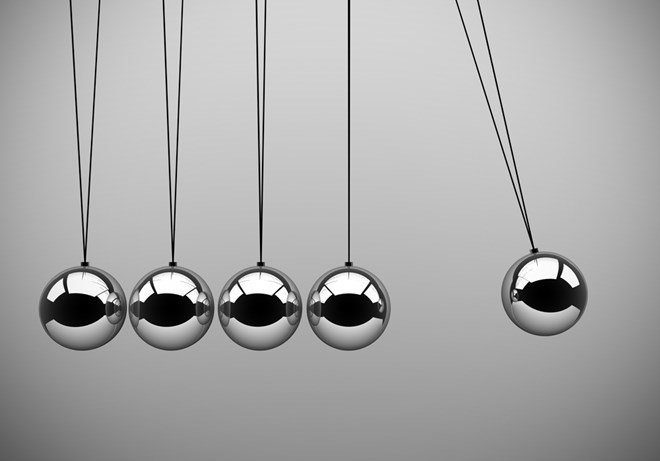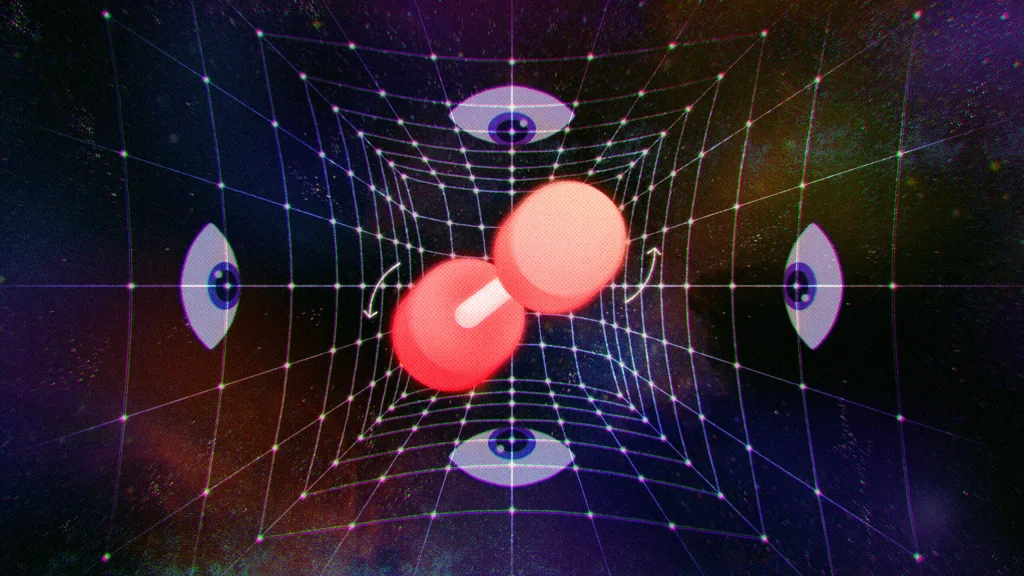Momentum is a concept from physics that describes the amount of motion that an object has. It is a vector quantity, meaning that it has both magnitude and direction. This means it can be eiter positive or negative, depending on the direction of the object’s motion.
Positive momentum indicates that an object is moving forward or up, while negative momentum indicates that an object is moving backwards or down. The magnitude of the momentum (the speed and mass of the object) will determine how much force is needed to change its direction or stop it completely.
When it comes to momentum, there are two important equations that you should know: Newton’s Second Law of Motion and the Momentum Equation. Newton’s Second Law states that force equals mass times acceleration, while the Momentum Equation states that momentum equals mass times velocity.
The Momentum Equation shows us how we can calculate the amount of momentum an object has by multiplying its mass with its velocity. Since velocity can be either positive or negative, this means that momentum can also be either positive or negative – depending on whether an object is moving forward or backward.
So to answer our original question: yes, momentum can be negative. We just need to look at both the mass and velocity of an object to determine if its momentum is positive (moving forward) or negative (moving backward). Understanding this concept is important in understanding many other concepts in physics such as impulse and conservation of momentum.
Can Momentum Have a Negative Impact?
Yes, momentum can have a negative value. Momentum is a vector quantity, meaning it has both a magnitude and a direction. In physics, the sign of the quantity (positive or negative) is used to indicate its direction. Therefore, if the direction of an object’s momentum is opposite to the positive direction, then its momentum would be considered to be negative.

Negative Momentum: What Does It Mean?
Having a negative momentum means that an object is travelling in the opposite direction of what has been chosen as the positive direction. This is usually indicated by a negative sign in front of the momentum’s numerical value. The magnitude of the negative momentum will be equal to the product of the object’s mass and its velocity, which will also be negative. This means that although the object is continuing to move in what has been chosen as the negative direction, it is losing velocity from one moment to another.
Identifying Positive and Negative Impulses
The direction of the impulse can be determined by lookig at the net force acting on an object. If the net force is in the positive direction, then the impulse is said to be positive. Conversely, if the net force is in the negative direction, then the impulse is said to be negative. Impulse can also be calculated using an object’s change in momentum over time. If an object’s momentum increases over a given amount of time, then this indicates a positive impulse was applied to it. If an object’s momentum decreases over a given amount of time, then this indicates a negative impulse was applied to it.
The Impact of Negative Momentum on Speed
Yes, negative momentum does mean slowing down. Momentum is a vector quantity, meaning it has a magnitude (size) and a direction. When an object has negative momentum, its speed is decreasing and it is moving in the opposite direction of its original motion. This means that the object is slowing down and losing energy.
Is Total Momentum Always Zero?
No, the total momentum of a system is not always 0. Momentum is a vector quantity, meaning it has both magnitude and direction. Therefore, when two objects interact, their momenta can cancel each other out if they have equal magnitudes but opposite directions. This means that the total momentum of the system can be 0 even if the individual momenta are not. For example, two objects moving towards each other in opposite directions will have a total momentum of 0 even though each one has a non-zero momentum.
Positive and Negative Momentum
Positive momentum is the result of taking actions that generate positive results. This could include increasing sales, improving customer service, or launching new products or services. These actions help to build trust and confidence in a company and can lead to more business and increased profits. As a result of this positive momentum, companies may experience growth in their oerall revenue and market share.
Negative momentum, on the other hand, is the result of taking actions that generate negative results. This could include reducing customer service levels, cutting product or service offerings, or failing to respond to customer complaints in a timely manner. These types of actions can lead to decreased customer satisfaction and sales, which can ultimately have a negative effect on the company’s bottom line. Negative momentum can be difficult to reverse, so it’s important for companies to take proactive steps to avoid it in the first place.
Can Negative Moment of Force Occur?
Yes, the moment of force can be negative. The moment of a force is the product of the magnitude of the force and its perpendicular distance from a reference point. If the direction of rotation caused by this force is counter-clockwise around that reference point, then the moment is considered to be negative. For example, if a force is applied to an object in a counter-clockwise direction with respect to its center of mass, then the moment will be negative.
Can an Object Have Both Negative Momentum and Positive Kinetic Energy?
No, an object cannot have negative momentum and positive kinetic energy. Momentum is a vector quantity that is the product of an object’s mass and velocity. Since mass and velocity are both always positive, the resulting momentum must also be positive. Meanwhile, kinetic energy is the energy released as a result of an object’s motion, which is always a positive value. Therefore, it is impossible for an object to have negative momentum and positive kinetic energy simultaneously.
Why Is Change in Momentum Always Positive?
Change in momentum is always positive because momentum is a vector quantity, meaning it has both magnitude and direction. Therefore, when calculating the change in momentum, we are measuring the difference in magnitude and direction between two distinct points. Since the magnitude of a vector can never be negative, the change in momentum will always be a positive value. Additionally, since the sign of momentum indicates its direction (positive for moving right, negative for moving left), any change in direction will result in an increase or decrease in magnitude and thus a positive change in momentum.
Can Negative Impulses Exist in Physics?
Yes, impulse can be negative in physics. Impulse is the integral of force with respect to time. It is a measure of the change in momentum of an object over time. When a force acts on an object for a short period of time, it results in a change in momentum, which is equal to the product of the force and the duration for which it acted. If the force acts in a direction opposite to that of motion, then the impulse will be negative and there will be a decrease in momentum. Negative impulses are commonly seen when objects collide or interact with each oter and also when they interact with surfaces or environments that exert forces on them such as friction and drag forces.
Are Impulse and Momentum the Same?
Yes, impulse and momentum are the same. Momentum is a vector quantity that is defined as the product of an object’s mass and its velocity. It is a measure of an object’s resistance to stopping and is represented by the symbol “p”. Impulse is a force applied to an object for a finite time period and can be used to change its momentum. Thus, impulse and momentum both represent the same physical phenomenon, but can be used to describe different aspects of it.
The Importance of Momentum
Momentum is an important concept in classical mechanics, which states that the total momentum of a system remains constant unless acted upon by an external force. It is a vector quantity, meaning it has both magnitude and direction. Momentum is directly proportional to an object’s mass and velocity – the more massive an object is, or the faster it moves, the greater its momentum. In addition to this, momentum also canges depending on the direction of motion; if two objects have the same mass and speed but are traveling in opposite directions, they will have opposite momenta. Finally, momentum is conserved; if no external forces act on an object, its momentum cannot increase or decrease over time.
Can Masses Have Negative Values?
No, a mass cannot be negative. Mass is a physical property that describes the amount of matter contained in an object, and can only be positive. This means that the amount of matter in an object can neer be less than nothing — it must always be more than zero. The absence of negative mass has been confirmed by numerous experiments and is a fundamental property of our universe.
Negative mass does appear in theoretical physics models and may exist in other universes or alternate dimensions, but it has not been observed in our own universe. Negative mass is theorized to behave differently than regular positive mass; for instance, when given a push it would move away from the source of the push rather than towards it, as one would expect with regular positive mass.
In contrast to its opposite counterpart, electric charge can take on either positive or negative values depending on the particle involved. Positively charged particles have more protons within their nucleus than electrons orbiting around them; negatively charged particles have more electrons than protons instead.

Can Negative Speed Exist?
No, negative speed is not a thing. Speed is a measure of how fast an object is moving, and it cannot be negative. Velocity, however, can be negative – it measures the rate of change in an object’s position and takes direction into account. If an object is moving to the left, then its velocity would be defined as negative.
The Effects of Falling on Velocity
Yes, velocity is negative when an object is falling. This is because the acceleration due to gravity is a downward force that acts on objects and causes them to accelerate in the direction of the force, which in this case is down. Therefore, since acceleration is in the negative direction, the velocity of a falling object will also be negative.
Conclusion
In conclusion, momentum can be negative when an object is moving backwards or down. This is because momentum is a vector quantity and direction is indicated by the sign, positive or negative. Positive numbers indicate an object moving forward or up and negative numbers mean an object moves backwards or down. Momentum has both magnitude and direction and this can be used to calculate the momentum of an object depending on its mass and velocity.
